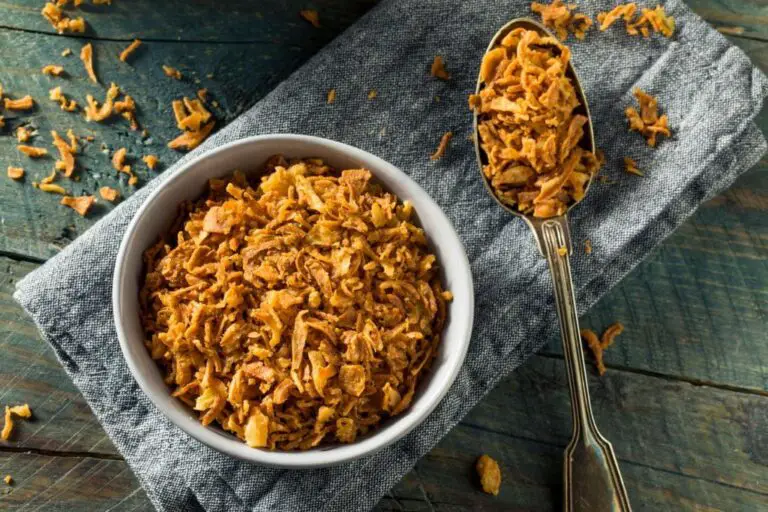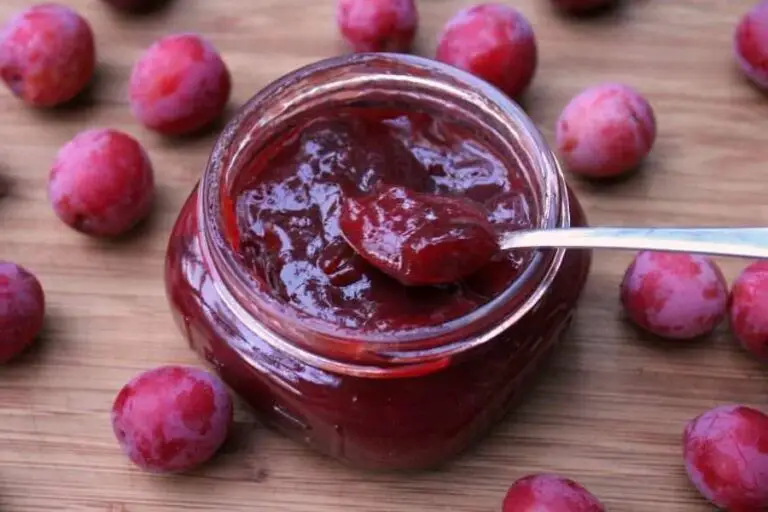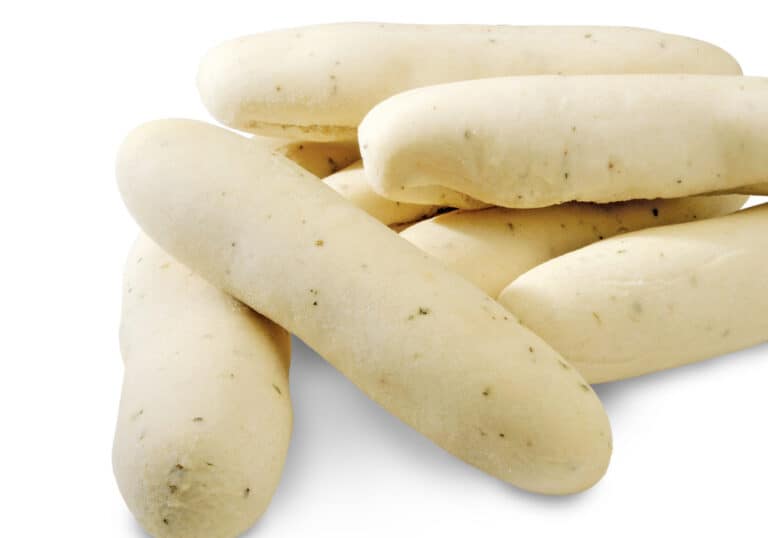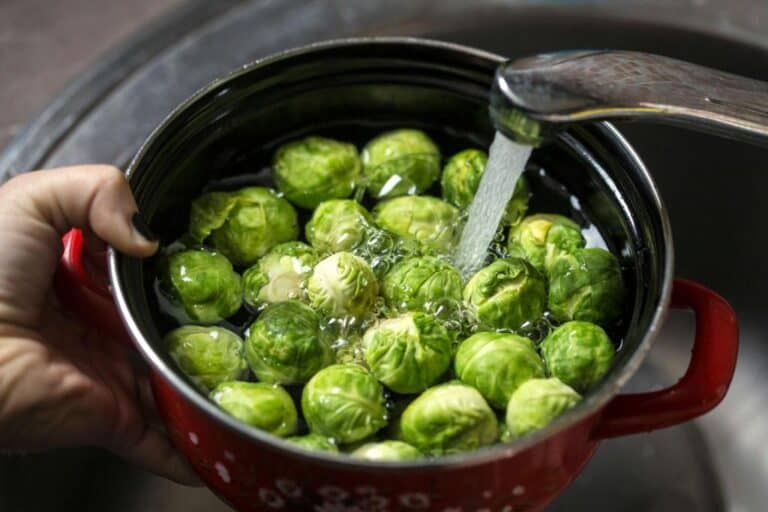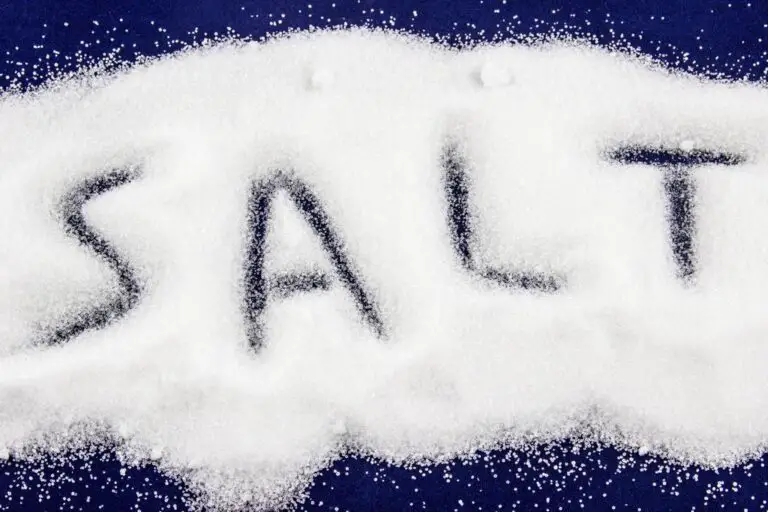Can I Freeze Acorn Squash Raw With the Skin On? Is It Possible?
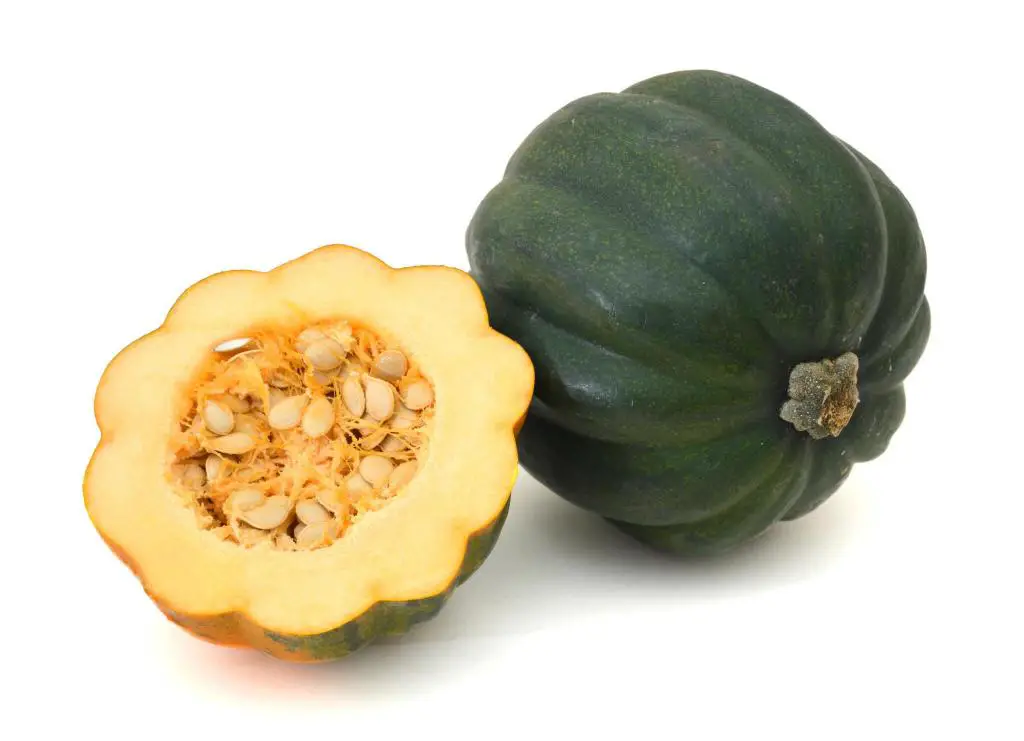
Acorn squash, with its distinctive shape and earthy flavor, is a delightful addition to many recipes. Whether you’ve grown an abundant crop in your garden or found a great deal at your local market, you may be wondering if you can preserve its goodness by freezing it.
But, let’s face it, acorn squash can be a bit of a kitchen challenge. Its tough skin and stubborn seeds often test our patience. So, can you freeze acorn squash raw with the skin on?
Certainly! Freezing acorn squash raw with the skin on is a convenient way to preserve this flavorful vegetable for future culinary uses.
In this comprehensive guide, we will delve into the world of acorn squash and explore the possibilities and methods of freezing it while addressing your questions and concerns.
Whether you’re a seasoned chef or a kitchen novice, get ready to explore the enchanting world of acorn squash and perhaps discover a time-saving trick that will revolutionize your cooking routine.
Understanding Acorn Squash
Acorn squash, also known as Cucurbita pepo var. turbinata, is a member of the gourd family renowned for its distinctively ribbed shape and vibrant color. Before we dive into freezing techniques, let’s take a moment to understand this versatile vegetable.
Nutritional Value and Health Benefits of Acorn Squash
| Nutrient | Amount per 1 cup (205g) |
| Calories | 56 |
| Carbohydrates | 15g |
| Fiber | 9g |
| Protein | 1.4g |
| Vitamin A | 40% of Daily Value (DV) |
| Vitamin C | 32% of DV |
| Potassium | 18% of DV |
| Folate | 10% of DV |
Acorn squash is a nutritional powerhouse, packed with vitamins and fiber. Its high vitamin A content is particularly beneficial for eye health and immune support.
Different Varieties of Acorn Squash
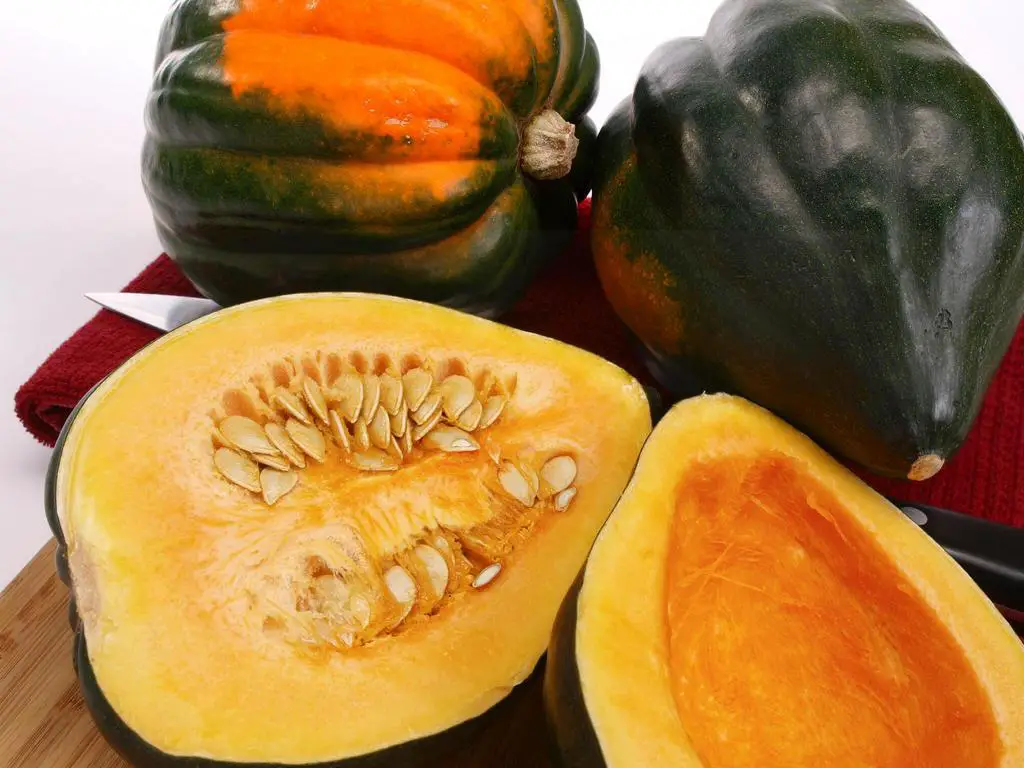
Acorn squash comes in various cultivars, each with its own unique flavor and appearance. Some common varieties include the following:
- Traditional Acorn: This variety is known for its classic green skin and sweet, nutty flavor.
- Golden Acorn: With its golden-yellow skin and tender flesh, this variety is slightly sweeter than the traditional acorn squash.
- Cream of the Crop: These squash feature creamy-white skin and a mild, slightly sweet flavor.
- Des Moines: The Des Moines variety boasts a dark green skin and a rich, sweet taste.
Now that we’ve acquainted ourselves with acorn squash, let’s move on to the freezing process.
Can I Freeze Acorn Squash Raw With the Skin On?
Yes, you can freeze acorn squash raw with the skin on. However, some people suggested that the skin and flesh should be cut into smaller pieces before freezing.
Keep in mind that raw acorn squash does not freeze as well as cooked squash, so it’s best to use it as soon as possible after freezing. If you prefer a longer shelf life, you can cook the squash before freezing it.
Cooked frozen acorn squash can be mashed, puréed, or added to pasta and risotto dishes or soups.
| Also see: Can Acorn Squash Be Canned? |
Why Do You Need to Freeze Acorn Squash Raw With the Skin On?
Freezing acorn squash raw with the skin on serves various purposes, enhancing convenience and preserving this nutritious vegetable for future use. Here are compelling reasons why you should consider this method:
- Preservation of Nutrients:
- Freezing acorn squash with the skin on helps retain vital nutrients.
- The skin contains fiber, vitamins, and minerals crucial for a balanced diet.
- This method ensures you not only have a convenient supply but also a nutritious one.
- Time-Saving Convenience:
- Prepping and freezing raw squash streamlines your cooking process.
- No need to peel the squash before freezing, saving valuable time in the kitchen.
- When you’re ready to use it, simply thaw and incorporate into your favorite dishes.
- Versatility in Cooking:
- Frozen acorn squash offers versatility in cooking applications.
- Use it in soups, stews, or side dishes effortlessly.
- The skin, when removed after freezing, easily allows for various culinary techniques.
- Reduced Food Waste:
- Freezing raw squash helps curb food waste.
- Preserve excess squash from your garden or take advantage of seasonal abundance.
- Enjoy the flavors of acorn squash year-round, minimizing the likelihood of unused produce going to waste.
Preparing Acorn Squash for Freezing
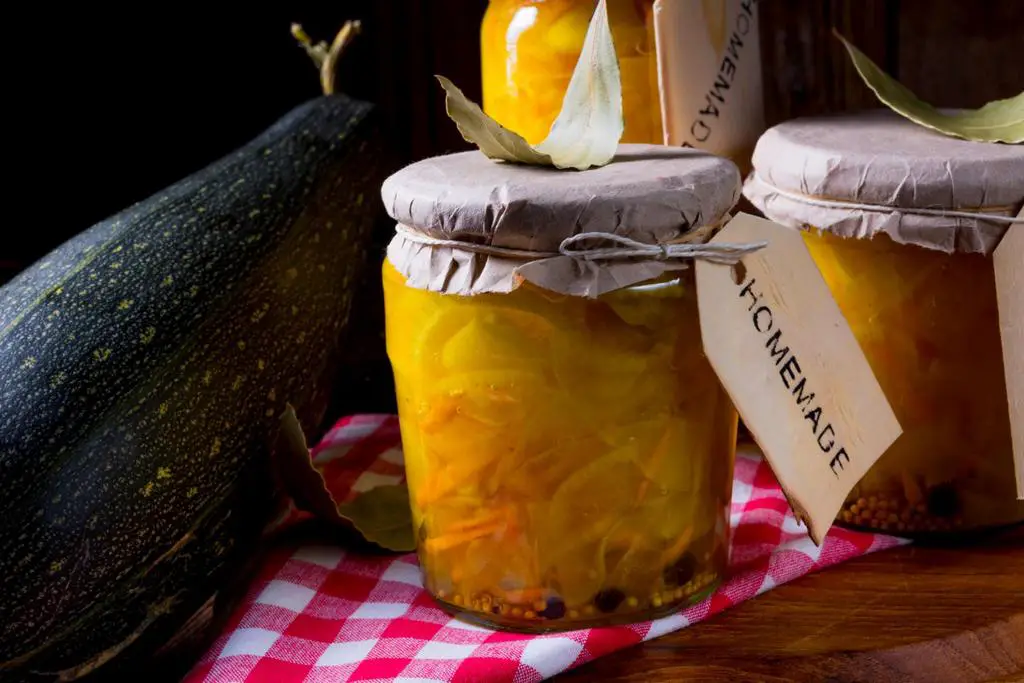
Before freezing acorn squash, you need to prepare it properly to maintain its quality and flavor. Here are the necessary steps:
Steps to Prepare Acorn Squash for Freezing
- Harvest or Purchase Ripe Squash: Choose mature acorn squash with firm, unblemished skin. A ripe squash should feel heavy for its size.
- Wash Thoroughly: Use cool, running water to wash the squash’s surface, removing any dirt or debris.
- Cut the Squash: Slice the acorn squash in half using a sharp knife. You’ll notice that the squash is divided into two distinct sections: the solid flesh and the seed cavity. Scoop out the seeds and stringy pulp with a spoon.
- Slice or Cube: Depending on your preference, you can slice or cube the squash into manageable pieces. Slicing is great for roasting, while cubing works well for soups and stews.
- Blanch (Optional): Blanching, a quick cooking process in boiling water, can help preserve the squash’s texture and color. We’ll explore this further in Outline 5.
- Pack for Freezing: Once prepared, you’re ready to freeze the acorn squash. Proper packaging is crucial to avoid freezer burn and maintain the vegetable’s freshness.
Tips for Choosing Ripe Acorn Squash – Look for squash with a deep, uniform color and a matte finish. – Avoid squash with soft spots, bruises, or wrinkled skin. – The stem should be dry and firmly attached, indicating freshness. |
Cleaning and Cutting Techniques
- When cleaning, pay special attention to the crevices and ridges on the skin.
- Use a sharp knife and a steady hand when cutting to ensure safety and precision.
Freezing Acorn Squash: Methods and Options
Freezing acorn squash is a fantastic way to extend its shelf life, but we need to choose the right method for your culinary needs. Let’s explore various freezing methods, their pros and cons, and the recommended containers for freezing.
Various Methods for Freezing Acorn Squash
There are three primary methods for freezing acorn squash:
- Raw Pack: This method involves freezing the squash without any precooking. It’s a convenient option but may lead to a slightly altered texture after thawing.
- Blanching: Blanching involves briefly immersing the squash in boiling water, followed by immediate cooling in an ice bath. This method helps preserve the squash’s color, flavor, and texture.
- Steam Blanching: Similar to blanching, steam blanching involves using steam instead of boiling water. It’s a gentler method that can yield excellent results.
Pros and Cons of Each Freezing Method
| Method | Pros | Cons |
| Raw Pack | Quick and convenient | Texture may suffer after thawing |
| Blanching | Preserves color, flavor, and texture | Requires additional time and equipment |
| Steam Blanching | Gentle method with good results | Requires specialized equipment for steam blanching |
Recommended Containers for Freezing
When freezing acorn squash, choose airtight containers or freezer bags to prevent freezer burn. Make sure to remove as much air as possible from the packaging to maintain freshness.
Now that we’ve covered the freezing methods and containers, let’s tackle a crucial question: Should you freeze acorn squash with or without the skin?
Freezing Acorn Squash: With or Without Skin?
The decision to freeze acorn squash with or without the skin is a matter of personal preference and culinary goals. Let’s explore the benefits and drawbacks of each option and discuss precautions to take when freezing the skin.
Exploring the Option to Freeze Acorn Squash With the Skin On
Freezing acorn squash with the skin on is entirely possible, but it’s essential to consider your future culinary plans. Here’s why you might choose to freeze it with the skin intact:
Benefits:
- Saves Time: Leaving the skin on can streamline the preparation process, as you won’t need to peel the squash before use.
- Nutritional Value: The skin contains additional nutrients and fiber, contributing to the overall nutritional profile of the dish.
- Textural Variation: Some enjoy the slightly chewy texture that the skin adds to recipes.
Drawbacks:
- Texture: The skin can become tougher after freezing, which may not be desirable in certain dishes.
- Flavor: Some individuals find the skin’s flavor to be more pronounced and may prefer the taste of peeled squash.
Precautions When Freezing With the Skin
If you choose to freeze acorn squash with the skin on, consider the following precautions:
- Thoroughly wash and scrub the squash to remove any dirt or contaminants from the skin.
- Check for any blemishes or imperfections on the skin and trim them if necessary to ensure the squash’s overall quality.
- Slice or cube the squash, as desired, while leaving the skin intact.
- If you plan to use the frozen squash in recipes where skin texture may be less important (e.g., soups or mashes), this method can be a time-saving option.
Now that we’ve covered freezing with the skin, let’s move on to another consideration: blanching.
Freezing Acorn Squash: Blanched or Unblanched?
Blanching plays a crucial role in preserving the texture and color of acorn squash during the freezing process. Let’s explore the significance of blanching, the pros and cons of this method, and how to blanch acorn squash effectively.
Understanding Blanching and Its Role in Freezing Vegetables
Blanching is a brief cooking process that involves immersing vegetables in boiling water or steam and then rapidly cooling them in an ice bath. This technique serves several essential purposes:
- Enzyme Inactivation: Blanching stops enzymatic reactions within the squash, helping preserve its color, flavor, and nutritional value.
- Texture Preservation: The brief heat exposure softens the squash’s cell walls, making it easier to pack and preventing freezer burn.
- Color Retention: Blanching helps maintain the vibrant color of the squash, enhancing its visual appeal in cooked dishes.
Pros and Cons of Blanching Acorn Squash Before Freezing
| Pros | Cons |
| Preserves color, flavor, and texture | Requires additional time and equipment |
| Reduces the risk of freezer burn | Extra steps may be seen as inconvenient |
| Ideal for dishes where texture and appearance matter | Slight nutrient loss during blanching |
How to Blanch Acorn Squash Effectively
- Prepare an Ice Bath: Fill a large bowl with ice water and set it aside. You’ll use this to cool the squash rapidly after blanching.
- Boil Water: Bring a large pot of water to a rolling boil.
- Clean and Cut Squash: Wash and prepare the acorn squash as mentioned earlier, slicing or cubing it to your preference.
- Blanch Squash: Carefully place the prepared squash into the boiling water. Use a blanching basket or a slotted spoon to ensure easy removal.
- Monitor Time: Timing is crucial when blanching. For acorn squash, blanching typically takes 2-3 minutes. Start counting the moment the squash goes into the boiling water.
- Ice Bath: After the blanching time is up, immediately transfer the squash to the ice bath to halt the cooking process. This step is essential for preserving texture and color.
- Drain and Dry: Once the squash has cooled in the ice bath, drain it thoroughly and pat it dry with a clean kitchen towel.
Storing Frozen Acorn Squash
Proper storage of frozen acorn squash is crucial to maintaining its quality and flavor over time. In this section, we’ll discuss the necessary storage conditions, shelf life, and tips for labeling and organizing your frozen squash.
Proper Storage Conditions for Frozen Acorn Squash
To ensure your frozen acorn squash remains in top condition, adhere to these storage guidelines:
- Temperature: Store your frozen squash at 0°F (-18°C) or lower to maintain its quality.
- Packaging: Use airtight containers or freezer bags to prevent moisture loss and freezer burn. Ensure the packaging is free of any excess air.
- Labeling: Clearly label each package with the date of freezing to help keep track of freshness.
- Organization: Arrange your frozen squash in an organized manner within the freezer, so you can easily access them when needed.
Shelf Life and Longevity of Frozen Acorn Squash
When properly stored, frozen acorn squash can retain its quality for an extended period. Here’s an approximate guideline for its shelf life:
- Whole Squash: When stored correctly, whole frozen acorn squash can last up to 12 months.
- Sliced or Cubed Squash: Smaller pieces of acorn squash may have a slightly shorter shelf life of around 8–10 months.
Keep in mind that while frozen acorn squash may still be safe to eat beyond these timeframes, its texture and flavor may deteriorate over time.
Thawing and Cooking Frozen Acorn Squash
Thawing and cooking frozen acorn squash can be a delightful culinary experience when done correctly. In this section, we’ll discuss safe thawing methods, provide recipe ideas, and share tips for preserving flavor and texture during cooking.
Safe Methods for Thawing Frozen Acorn Squash
It’s essential to thaw frozen acorn squash safely to prevent foodborne illnesses. Here are some recommended thawing methods:
- Refrigerator: Thaw the frozen squash in the refrigerator for several hours or overnight. This slow-thawing method ensures even defrosting while maintaining food safety.
- Cold Water Bath: Place the sealed package of frozen squash in a large bowl of cold water. Change the water every 30 minutes until the squash is thawed.
- Microwave (for immediate use): If you need to use the squash quickly, you can microwave it using the defrost setting. Be cautious not to overcook and damage the texture.
Recipe Ideas and Cooking Techniques for Frozen Acorn Squash
Frozen acorn squash can be used in a variety of recipes, including:
- Roasted Acorn Squash: Toss thawed acorn squash with olive oil, salt, and your choice of seasonings. Roast in the oven until tender and caramelized.
- Acorn Squash Soup: Puree thawed squash with vegetable broth, onions, and seasonings to create a creamy and comforting soup.
- Stuffed Acorn Squash: Hollow out thawed squash halves and fill them with a flavorful stuffing mixture. Bake until the squash is tender and the stuffing is golden brown.
Tips for Preserving Flavor and Texture During Cooking
- Season the squash with herbs, spices, and your favorite seasonings to enhance its flavor.
- Use olive oil or butter to add richness and moisture to roasted or sautéed squash.
- Avoid overcooking, as this can lead to mushy squash. Cook acorn squash just until it’s tender but still has a slight bite.
Now that you’re equipped with the knowledge to thaw and cook your frozen acorn squash effectively, let’s move on to address safety and health concerns related to acorn squash.
Alternative Uses for Frozen Acorn Squash
Frozen acorn squash doesn’t have to be limited to traditional recipes. In this section, we’ll explore creative ways to incorporate frozen acorn squash into a variety of dishes, reducing food waste and adding versatility to your menu.
Creative Ways to Use Frozen Acorn Squashes in Recipes
- Acorn Squash Smoothies: Blend thawed acorn squash with your favorite fruits, yogurt, and a touch of honey for a creamy and nutritious smoothie.
- Squash Risotto: Incorporate thawed squash cubes into a creamy risotto for added flavor and a vibrant orange hue.
- Squash Desserts: Use pureed acorn squash as a natural sweetener in baked goods like muffins, pancakes, and pies.
- Squash Puree: Whip up a silky-smooth acorn squash puree to use as a side dish, sauce, or base for creamy soups.
- Squash and Hot Cheddar Casserole: This easy-to-make casserole is loaded with flavorful ingredients like squash, onions, garlic, and shredded cheddar cheese.
- Squash Fritters: Combine grated thawed squash with herbs and spices to create savory fritters or pancakes.
- Sausage and Kale Stuffed Acorn Squash on the Grill: Add garlic and cook. Then add kale and toss; add broth. Cover and cook until kale is tender
By thinking outside the box, you can enjoy the unique flavor of acorn squash in a wide range of dishes.
| See also: What Is the Taste of Acorn Squash White Inside? |
FAQs
Can I freeze acorn squash without blanching it?
Yes, you can freeze acorn squash without blanching it, but blanching helps preserve its color, texture, and flavor for a longer time. If you choose not to blanch, be prepared for potential texture changes upon thawing.
How long does frozen acorn squash last in the freezer?
Frozen acorn squash can last for 10–12 months in the freezer when properly packaged in airtight containers or bags. Make sure to label and date them for easy tracking.
Can I freeze acorn squash seeds for planting?
Yes, you can freeze acorn squash seeds for planting in future seasons. Store them in an airtight container to maintain their viability.
Are there any safety concerns when freezing acorn squash?
As long as you follow proper freezing procedures and maintain the recommended storage.
Can I freeze mashed acorn squash?
Yes, you can freeze mashed acorn squash. Portion it into airtight containers or freezer bags and label them for easy use.

